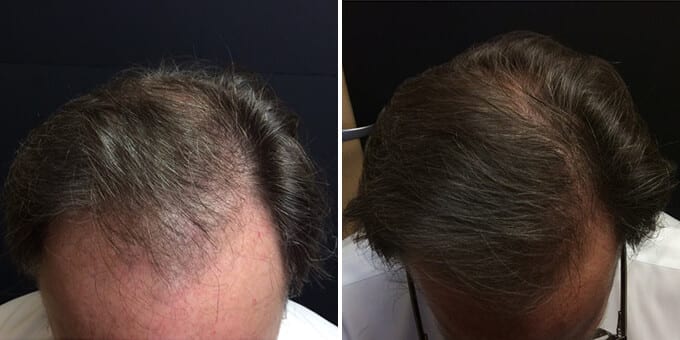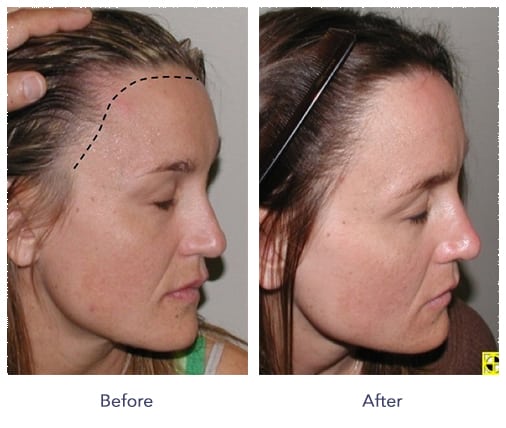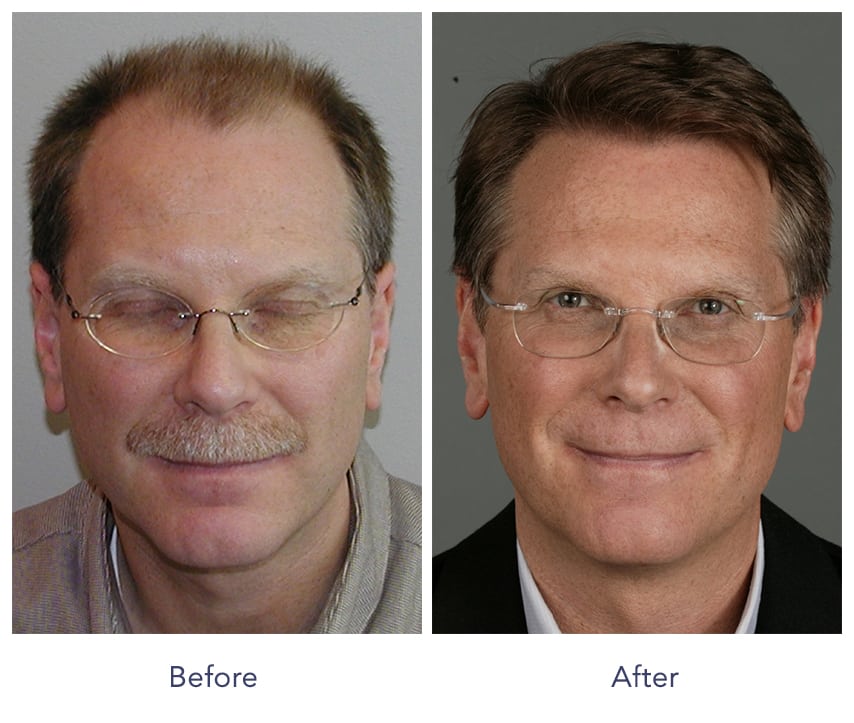Have you been struggling with hair loss and looking for a solution? Look no further! In this article, we will discuss the innovative technique of hair transplantation and how it can help you regain your confidence. Whether you’re a man or a woman, dealing with pattern baldness or thinning hair, a hair transplant in Colorado Springs, Colorado could be the answer you’ve been searching for. Say goodbye to wigs, hairpieces, and constant worry about your appearance – with a hair transplant, you can enjoy a natural and permanent solution to your hair loss woes.

Understanding Hair Transplantation
If you’re experiencing hair loss or thinning, hair transplantation can be a life-changing solution that restores your confidence and gives you a full head of hair. In this comprehensive article, we will explore the different types of hair transplants, the process itself, the benefits, and everything you need to know before considering this procedure.
Types of Hair Transplants
There are several types of hair transplants available, including follicular unit extraction (FUE), follicular unit transplantation (FUT), and robotic-assisted hair transplantation. FUE involves extracting individual hair follicles from a donor area and implanting them into the balding or thinning areas. FUT, on the other hand, involves removing a strip of scalp from the donor area and dissecting it into individual follicular units for transplantation. Robotic-assisted hair transplantation utilizes advanced technology to automate the extraction and transplantation process, ensuring precision and accuracy.
The Hair Transplant Process
The hair transplant process involves several steps to ensure a successful and natural-looking outcome. It begins with a thorough consultation where the hair transplant specialist evaluates your hair loss, examines your donor area, and discusses your goals and expectations. Once you decide to proceed with the procedure, pre-operative instructions will be provided to prepare you for the day of the surgery. On the day of the surgery, local anesthesia is administered to ensure your comfort throughout the procedure. The surgeon then harvests the hair follicles from the donor area and implants them into the recipient area, following a meticulously planned design. The entire process can take several hours, depending on the extent of the hair transplant.
Benefits of Hair Transplants
Hair transplants offer numerous benefits for individuals struggling with hair loss. Firstly, they provide a permanent solution to hair loss, unlike temporary measures such as hairpieces or medications. Once the transplanted hair follicles settle and grow, they are resistant to further hair loss. This means that the results are long-lasting and natural-looking. Hair transplants also allow for the restoration of a youthful hairline and improved overall appearance. The procedure can boost self-esteem and confidence, helping individuals feel more comfortable and satisfied with their appearance. Additionally, hair transplants require minimal maintenance and do not interfere with daily activities, making them a convenient option for busy individuals.
Choosing a Hair Transplantation Clinic
Selecting the right hair transplant clinic is crucial to ensure a successful outcome and a positive experience. Here are some factors to consider when choosing a hair transplantation clinic:
Experience and Expertise
Look for a clinic with experienced hair transplant specialists who have a proven track record of successful procedures. Make sure they have the necessary qualifications and certifications in the field of hair transplantation. A clinic with a team of skilled and dedicated professionals will provide you with the highest standard of care throughout your hair transplant journey.
Customer Reviews and Testimonials
Reading customer reviews and testimonials can give you valuable insights into the clinic’s reputation and the experiences of previous patients. Look for clinics with positive feedback and testimonials that highlight successful results and satisfied patients. This will give you confidence in the clinic’s ability to deliver the desired outcome.
Technology and Techniques Used
Advancements in technology and techniques have greatly improved the hair transplant process. Look for a clinic that utilizes the latest tools and equipment, such as robotic-assisted hair transplantation systems. These technologies enhance precision and ensure optimal graft survival and natural-looking results. Additionally, clinics that stay up to date with the latest research and techniques will provide you with the most effective and advanced solutions.

Preparing for a Hair Transplant
Proper preparation before the hair transplant procedure is crucial for optimal results and a smooth recovery. Here are some steps involved in preparing for a hair transplant:
Initial Consultation
The initial consultation is a crucial step in the hair transplant process. During this consultation, the hair transplant specialist will assess your hair loss, determine your suitability for the procedure, and discuss your goals. They will explain the procedure in detail, answer any questions you may have, and provide you with an understanding of what to expect before, during, and after the hair transplant.
Pre-Procedure Instructions
The hair transplant clinic will provide you with specific pre-procedure instructions to follow. These instructions usually include avoiding certain medications that can interfere with the procedure, abstaining from alcohol and smoking, and maintaining good scalp hygiene. Following these instructions will prepare your scalp and body for the upcoming hair transplant and help optimize the results.
Mental and Emotional Preparation
Undergoing a hair transplant can be a significant decision that may bring up certain emotions and anxieties. It’s essential to mentally and emotionally prepare yourself for the procedure. Take time to educate yourself about the process, gather information from trusted sources, and have realistic expectations. Discuss any concerns or fears with your hair transplant specialist, as they can provide guidance and support to alleviate any apprehension.
The Hair Transplant Procedure
Understanding the hair transplant procedure itself can help ease any anxiety and give you a clear idea of what to expect. Here are the key aspects of the hair transplant procedure:
Hair Harvesting Methods
Hair harvesting involves extracting the hair follicles from the donor area, typically located at the back or sides of the scalp. Two common methods of hair harvesting are follicular unit extraction (FUE) and follicular unit transplantation (FUT). FUE involves extracting individual hair follicles using a tiny punch tool, leaving minimal scarring and allowing for a quicker recovery. FUT involves removing a strip of scalp containing hair follicles and then dissecting it into individual follicular units. The choice of hair harvesting method depends on factors such as the extent of hair loss, the quality of the donor area, and the desired outcome.
Implantation Techniques
Implantation refers to the process of placing the harvested hair follicles into the recipient area, where hair loss or thinning has occurred. Implantation techniques have evolved significantly, enabling surgeons to achieve natural-looking results. The surgeon carefully plans the placement of the grafts to mimic the natural hair growth pattern and ensure an aesthetically pleasing outcome. The density, angle, and direction of the implanted hair follicles are crucial for achieving a seamless and natural look.
Duration of the Procedure
The duration of the hair transplant procedure can vary depending on the extent of hair loss and the number of grafts to be transplanted. On average, the procedure can take anywhere from four to eight hours. The length of the procedure is influenced by factors such as the hair harvesting method, implantation technique, and the size of the recipient area. The hair transplant specialist will provide you with a more accurate estimate during your consultation, taking into account your specific needs.

Recovery and Aftercare
Proper post-transplant care and aftercare are essential for a successful recovery and optimal results. Here are some aspects of recovery and aftercare to consider:
Post-Transplant Care Instructions
The hair transplant clinic will provide you with specific post-transplant care instructions to follow. These instructions typically include avoiding excessive sunlight, following a gentle washing routine for the recipient area, and abstaining from strenuous activities that could impact the newly transplanted hair follicles. It’s crucial to adhere to these instructions to promote healing, prevent complications, and maximize the success of the transplant.
Managing Discomfort and Side Effects
After the hair transplant, some discomfort and side effects are normal and expected. These can include swelling, tenderness, redness, and scabbing in the recipient and donor areas. The clinic will provide you with instructions on managing these discomforts, which may include using prescribed medication or applying cooling techniques. It’s important to communicate any concerns or unexpected symptoms to your hair transplant specialist for appropriate guidance and support.
Expected Results and Timeline
Hair transplant results take time to fully develop. Initially, the transplanted hair follicles will shed, followed by a resting phase. New hair growth typically starts around three to four months after the procedure, with noticeable improvement visible within six to twelve months. It’s crucial to have realistic expectations and be patient as the hair continues to grow and mature. Regular follow-up visits with your hair transplant specialist will allow them to monitor your progress and address any concerns during the healing process.
Cost and Financing Options
The cost of hair transplantation varies depending on several factors. Here are some aspects to consider regarding the cost and financing options:
Factors Affecting the Cost
The cost of hair transplantation can be influenced by factors such as the extent of hair loss, the number of grafts needed, the hair transplant clinic’s location, the experience of the surgeon, and the hair transplant method chosen. More extensive procedures or those requiring a higher number of grafts may incur a higher cost. It’s important to discuss the cost breakdown and any potential additional fees with the hair transplant clinic during your consultation.
Insurance Coverage
In most cases, hair transplants are considered elective cosmetic procedures and are not covered by insurance. However, it’s advisable to check with your insurance provider to understand your coverage and see if any portion of the cost can be reimbursed. Keep in mind that insurance coverage for hair transplantation is rare, and it’s generally considered a self-payment procedure.
Financing and Payment Plans
Many hair transplant clinics offer financing options or payment plans to make the procedure more affordable. These options allow you to spread out the cost of the transplant over time, making it more manageable within your budget. It’s worth discussing these options with the hair transplant clinic to determine the best payment plan that suits your financial needs.

Common Concerns and FAQs
Having concerns and questions about hair transplantation is completely normal. Here are some common concerns and frequently asked questions addressed:
Am I a Suitable Candidate for Hair Transplant?
Suitability for hair transplant varies from person to person. Factors such as the extent of hair loss, the quality of the donor area, and overall health will determine your eligibility. A consultation with a hair transplant specialist is crucial to assess your suitability and discuss your unique circumstances.
Will the Transplanted Hair Look Natural?
When performed by skilled and experienced hair transplant specialists, the transplanted hair can look incredibly natural. The design and placement of the transplanted follicles play a crucial role in achieving a seamless and realistic appearance. The hair transplant specialist will work closely with you to ensure the transplanted hair mimics your natural hair growth pattern for the most natural-looking outcome.
Are Hair Transplants Permanent?
Hair transplants offer a permanent solution to hair loss. This is because the hair follicles transplanted from the donor area are resistant to the hormone that causes hair loss. Once these transplanted follicles take root and start growing, they will continue to do so for a lifetime, providing long-lasting and permanent results.
Success Stories and Before/After Photos
Seeing real-life success stories and before/after photos can provide you with visual proof of the effectiveness of hair transplantation. Many reputable hair transplant clinics showcase testimonials and photographs of previous patients on their websites. These testimonials and photos can give you an idea of the potential results and allow you to see the transformation that can be achieved through hair transplantation.

Alternative Hair Restoration Solutions
While hair transplantation is the gold standard for restoring natural hair, there are alternative solutions available that may suit individual preferences or circumstances. Here are some options to consider:
Medication and Supplements
Medications such as finasteride and minoxidil can help slow down or halt hair loss progression in certain individuals. These medications require ongoing use and may have varying effects. Some individuals also consider using supplements that claim to promote hair growth, although their effectiveness can vary greatly.
Scalp Micropigmentation
Scalp micro pigmentation is a non-surgical procedure that involves depositing pigments into the scalp to create the appearance of a shaved head or to add density to thinning hair. This technique can give the illusion of a full head of hair and is particularly helpful for individuals with limited donor hair or those who prefer a shorter hairstyle.
Hair System Integration
Hair systems, also known as hairpieces or wigs, are non-surgical options that provide instant results in restoring hair. A hairpiece is custom-made to match your hair color, texture, and desired style. This option is ideal for individuals who want immediate results without undergoing a surgical procedure. With proper maintenance and care, hair systems can provide a natural and undetectable hair restoration solution.
Consulting a Hair Transplant Specialist
Consulting a hair transplant specialist is a crucial step in determining the best approach to address your hair loss concerns. Here are some reasons why expert advice is important:
Importance of Expert Advice
Hair transplant specialists have extensive knowledge and experience in the field of hair transplantation. They can evaluate your specific situation, determine your suitability for the procedure, and recommend the most suitable options. Expert advice ensures that you receive personalized care and a treatment plan tailored to your unique needs and goals.
Questions to Ask During Consultation
During your consultation, it’s essential to ask any questions or address any concerns you may have. Seek clarification on the procedure, the expected results, the recovery process, and any potential risks or complications. Asking questions will give you a better understanding of the procedure and help you make an informed decision.
Follow-up and Maintenance Care
Following your hair transplant procedure, you will likely have follow-up appointments with your hair transplant specialist. These appointments allow the specialist to monitor your progress, address any concerns, and provide guidance on post-transplant care and maintenance. Regularly scheduled maintenance visits can help ensure the longevity of your transplanted hair and optimize its appearance.
Hair transplantation offers a permanent and natural-looking solution for individuals struggling with hair loss. By choosing a reputable hair transplant clinic, preparing for the procedure, and adhering to proper aftercare, you can achieve optimal results and restore your confidence. Consulting a hair transplant specialist is crucial to determine your eligibility, understand the procedure, and make informed decisions throughout your hair restoration journey. With the advancements in technology and techniques, hair transplantation has become a reliable and effective option for regaining a full head of hair and reclaiming your self-esteem.
Maps Of Colorado Springs, Colorado
Colorado Springs, Colorado
Video Of Colorado Springs, Colorado
Downtown Colorado Springs
Video Of Downtown Colorado Springs, Colorado
Weather in Colorado Springs, Colorado
Related Terms About Hair Transplant Colorado Springs Colorado
Are Hair Transplants Common, Cost Of Hair Transplant Denver, Hair Transplant Colorado Springs, Hair Transplant Cost Colorado Springs, Hair Transplant Cost In Colorado, How Common Are Hair Transplants





